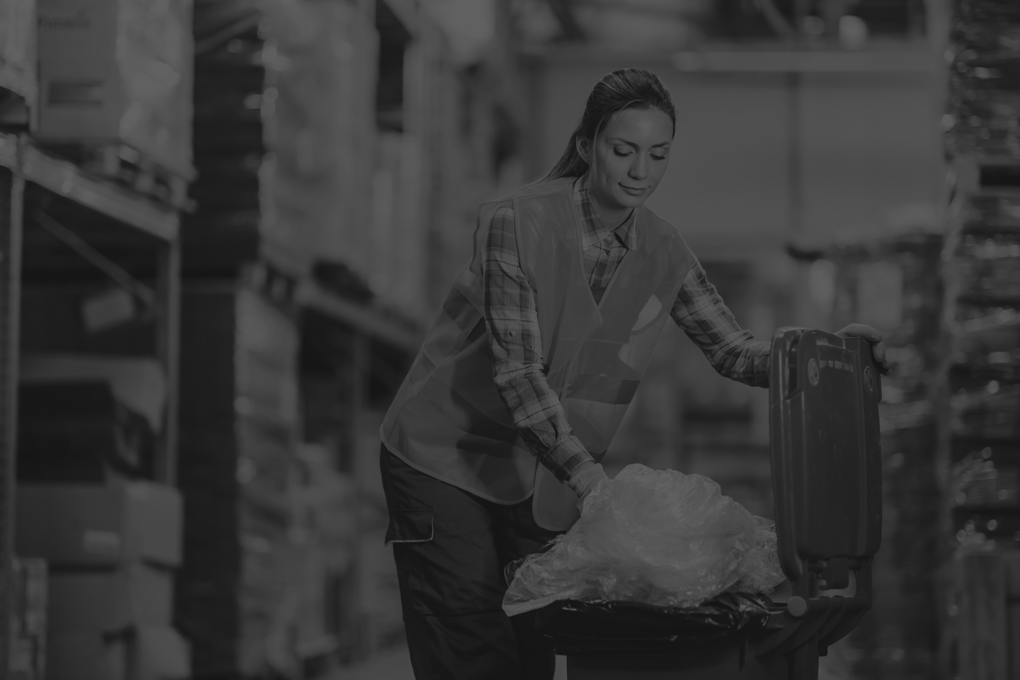Green Logistics: Steps to Eco-Friendly Operations.

Businesses must now include sustainability in their operations, especially in supply chain management. Green logistics merges eco-friendly practices with traditional methods, helping companies to make money and be environmentally responsible.
What is Green Logistics?
Green logistics aims to reduce the environmental impact of the logistics industry. This includes transportation, warehousing, inventory management, and handling returns. Companies aim to cut emissions, minimize waste, and optimize energy use by adopting green logistics practices.
The Strategic Advantage of Green Logistics.

Enhancing Profit.
A common misconception is that green logistics is purely ethical and costly. However, sustainable logistic practices can lead to significant cost savings. Here’s how:
- Fuel Consumption: Using fuel-efficient vehicles and alternative fuels can greatly reduce fuel costs and reduce emissions.
- Route Optimization: Advanced route planning software can cut down on mileage and fuel use, lowering operational costs.
- Reducing Waste: Eco-friendly packaging and efficient inventory management can reduce waste and disposal costs.
- Energy Consumption: Energy-efficient warehouse practices, like LED lighting and renewable energy, can save on energy bills.
Boosting Brand Reputation.
Consumers today care more about the environment. Businesses that go green can improve their reputation and attract loyal customers. Many consumers are willing to pay extra for products from eco-friendly companies.
Regulatory Compliance.
Countries worldwide are making environmental rules stricter. Businesses can follow these rules by using green logistics, which helps them avoid fines and damage to their reputation.
Key Areas of Eco Logistics.

Last Mile Delivery.
The last step in delivery, called last-mile delivery, is often the least efficient and most harmful to the environment. Using electric vehicles, bike couriers, and local delivery centres can make it greener.
Reverse Logistics.
Handling returns and recycling products can use a lot of resources. Green logistics here focuses on fixing, recycling, and reusing returned items to cut waste and save resources.
Sustainable Packaging.
Switching to environmentally friendly packaging, like biodegradable or recyclable materials, can lower the environmental impact. Using the right size of packaging can also reduce shipment weight and volume. This leads to less fuel use and fewer emissions.
Collaborative Logistics.
Working with other companies can make better use of resources. Sharing transportation or combining shipments can reduce the number of trips needed, saving fuel and lowering emissions.
How to Calculate Greenness.

Measuring the “greenness” of your logistics is key to improving sustainability. By tracking your environmental impact, you can set goals and monitor progress. Here are some simple ways to measure greenness:
Carbon Footprint.
This measures the total greenhouse gas emissions (mainly CO2) from your logistics process.
- Identify Sources: Look at emissions from transportation, buildings, and waste.
- Collect Data: Record fossil fuel use, electricity use, and waste amounts.
- Use Emission Factors: Convert this data into CO2 equivalents using online tools.
Energy Consumption.
Track how much energy your logistic operations use, including electricity in warehouses and fuel in vehicles.
- Gather Bills: Collect electricity, gas, and other utility bills.
- Record Fuel Usage: Track fuel consumption for your fleet.
- Convert to Common Units: Use units like kilowatt-hours for all energy usage.
Waste Generation.
Measure the waste created by your logistics activities.
- Measure Waste: Weigh or estimate the volume of waste from packaging, shipping, and warehousing.
- Classify Waste: Sort waste into recyclable, compostable, and non-recyclable.
- Calculate Diversion Rate: Find out how much waste is recycled or composted.
Water Usage.
Track water use in your facilities for activities like cleaning and storage.
- Monitor Usage: Record water usage regularly.
- Save Water: Implement water-saving measures like rainwater collection and efficient plumbing.
Key Performance Indicators (KPIs).
Create KPIs to track and report your green efforts.
- Emissions per Mile: Measure emissions per mile or kilometre.
- Energy Use per Unit: Track energy use per tonne-kilometer or cubic meter.
- Waste per Shipment: Monitor waste per shipment.
- Water Use per Facility: Record water use per facility.
By tracking these metrics, businesses can better understand and improve their environmental impact.
Implementing Green Logistics.

For businesses looking to adopt green logistics practices, follow these steps:
Conduct a Sustainability Audit: Check your current logistics to find areas for improvement. Look at your supply chain, transportation, and warehousing. Identify inefficiencies and high-impact areas.
Set Clear Goals: Set clear goals to reduce carbon footprint, waste, and energy use. Make sure these goals match your company’s eco-friendly objectives. This might involve using less fuel, cutting down on packaging waste, or increasing the use of renewable energy.
Invest in Technology: Use advanced technologies like IoT, AI, and machine learning. These can help with route planning, maintenance, and real-time tracking. Consider electric or hybrid vehicles for your fleet.
Engage Stakeholders: Involve employees, suppliers, and customers in your eco-friendliness efforts. Educate and train your team on green logistics. Encourage suppliers to adopt similar practices. Promote your green initiatives to customers and offer eco-friendly delivery options.
Monitor and Report: Keep track of your progress and share your achievements with stakeholders. Being transparent helps build trust and accountability. Regular reports can help you stay on course, pinpoint areas for improvement, and demonstrate your dedication to sustainability.
Conclusion.
Green logistics is important for businesses to succeed. By using sustainable practices, companies can make money and be responsible.
Want to get started? Talk to our experts to learn how to use green logistics in your company. Using green logistics helps protect the environment and shows your company cares about sustainability. It’s time to take action.
—
By following these best practices, your business can reduce its environmental impact, save costs, and enhance its competitive edge. Begin your green logistics journey today and transform your supply chain into a model of efficiency and eco-friendliness.
Frequently Asked Questions.
Green logistics means using eco-friendly practices in transportation to reduce waste, emissions, and energy use while staying efficient.
Using green logistics can be as simple as choosing eco-friendly packaging or as advanced as using new technologies to find the best routes. Businesses can start with small changes and gradually adopt more sustainable practices.
– Using electric or hybrid vehicles for deliveries
– Optimizing delivery routes to reduce travel distances
– Employing eco-friendly packaging materials
– Utilizing renewable energy sources for warehouses
– Recycling or refurbishing returned items